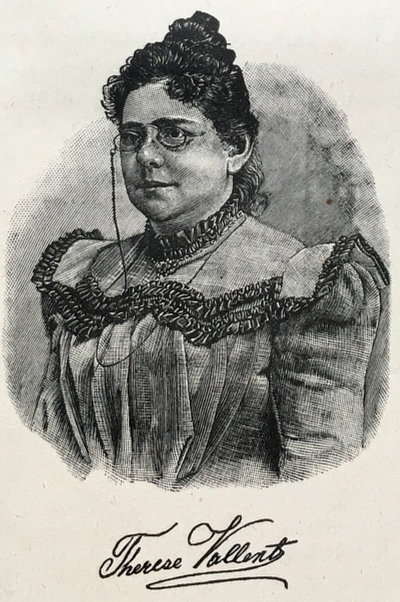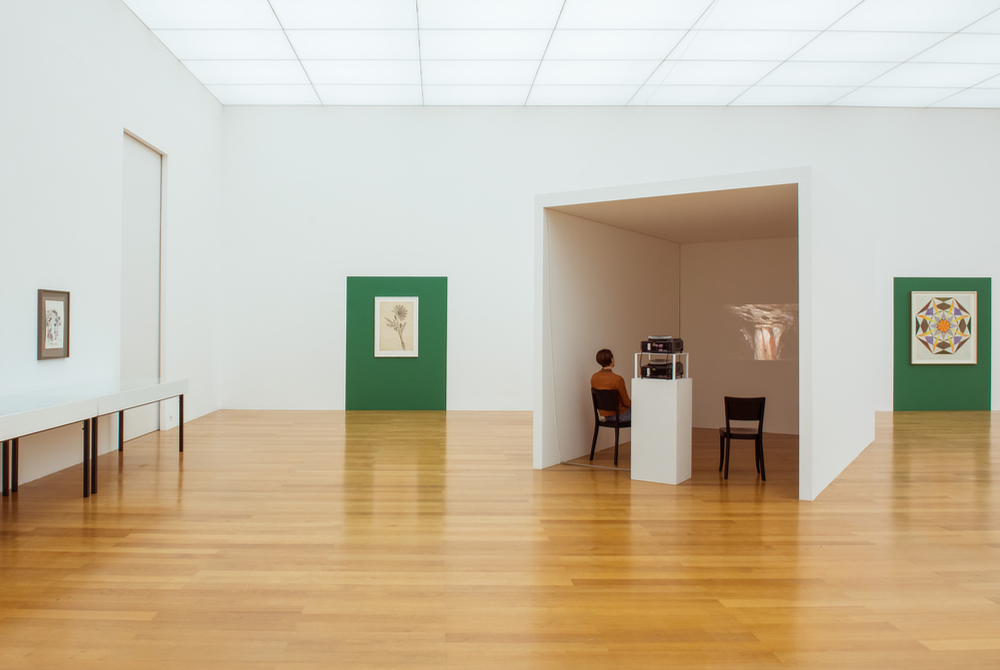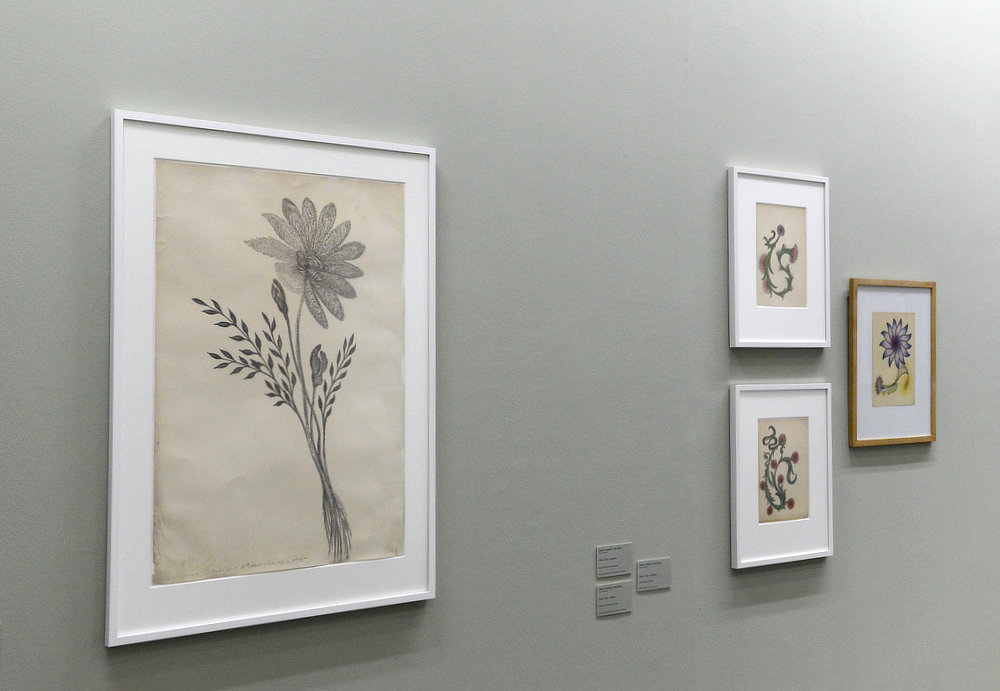THERESE VALLENT
b. 1856 Vienna, Austro-Hungarian Empire
d. 1932 Budapest, Hungary
WORKS | BIOGRAPHY | EXHIBITIONS | PUBLICATIONS
SELECTED WORKS
BIOGRAPHY
 In 1899, Therese Vallent made a name for herself as a mediumistic artist. In no time she was known throughout Europe as the "moon painter".
In 1899, Therese Vallent made a name for herself as a mediumistic artist. In no time she was known throughout Europe as the "moon painter".
She was the wife of a French musician from the Royal Hungarian Opera Orchestra in Budapest. At the age of 36, at the insistence of her husband she participated in spiritualistic séances. Her husband hoped his wife would obtain messages from the beyond and write them down automatically. Instead of a text, Therese Vallent’s hand began to draw a variety of lines and a dense mesh of curlicues and arabesques, which eventually formed into a plant-like composition. Thus, she created "plants of the moon" on large sheets of paper, which were given strange names. A spirit guide by the name of Ralf claimed to be the originator of these works. In addition to the plants she later also drew grotesque animals, which were designated as “inhabitants of the moon”.
Therese Vallent drew in a peculiar manner with bluntly cut pencils. She held the pencil vertically over the paper. Without supporting the arm, she tapped the pencil on the paper in quick succession as if produced by a machine. Finally, her hand carried out energetic hurling movements, throwing seemingly random strokes on the paper from which the shape of the drawing emerged.
A scandal in Vienna made her famous overnight: the police prohibited an exhibition of her works and a public demonstration of her mediumistic drawing. All the newspapers reported on this case: As a result, the interest in the moon painter was aroused even more. The famous spiritualist author, baroness Adelma of Vay, as well as the celebrated French astronomer and occultist Camille Flammarion announced their visit to her home in Budapest, Hungary. The Munich professor of art, Gabriel von Max, regarded the case worthy of serious investigation, and remarked about Vallent’s drawings: “During all my life I have never seen anything similar.”
Therese Vallent toured Europe and demonstrated her skills in many places. After her meteoric rise, she disappeared from the scene as early as 1900. We do not know what has become of Therese Vallent. Her drawings survived only as reproductions in newspapers and magazines. A single original by Therese Vallent is known today, the moon flower "Eroses", drawn on July 2, 1899.
EXHIBITIONS
2025 Hidden Modernism: The Fascination with the Occult around 1900 / Leopold Museum, Vienna, September 4, 2025 – January 18, 2026
2020 Parliament of Plants / Kunstmuseum Liechtenstein, Vaduz / September 6, 2020 – January 17, 2021
2019 Plants of the Soul: Floral Fantasies between Symbolism and Outsider Art / Wilhelm Hack Museum, Ludwigshafen, Germany / March 31, 2019 – August 4, 2019

Therese Vallent's "Moon flower" (1899) shown at the exhibition Parliament of Plants at the Kunstmuseum Liechtenstein, Vaduz, alongside with a work of Emma Kunz, 9/6/2020/ – 1/17/2021.
Foto / Photo: Sandra Maier
© Kunstmuseum Liechtenstein

Therese Vallent's "Moon flower" (1899) together with works by Anna Hackel at the exhibition Plants of the Soul: Floral Fantasies between Symbolism and Outsider Art. Wilhelm Hack Museum, Ludwigshafen, Germany, 3/31/2019 – 8/4/2019.
Photo © Elmar R. Gruber
SELECTED PUBLICATIONS
Maier, F., "Ein psychologisches Räthsel," Psychische Studien, 27, 1900, pp. 55-60.
Obertimpfler, Carl, "Das Zeichnenmedium Frau Therese Vallent," Die Übersinnliche Welt. Mittheilungen aus dem Gebiete des Occultismus, 7, 1899, pp. 445-49.
Obertimpfler, Carl, "The Drawing Medium Mrs. Therese Vallent," Banner of Light, 86, 22, January 27, 1900.
"Un médium dessinateur," Révue spirite. Journal d’études psychologiques, 42, 1899, pp. 536-39.
"Ein phänomenales Zeichen-Medium," Zeitschrift für Spiritismus, 3, 22, 1899, pp. 192-3.
"Die 'Mondblumen' des 'Geistes' Ralph in Budapest," Das interessante Blatt, Vienna, 29 June 1899, pp. 2-3.

